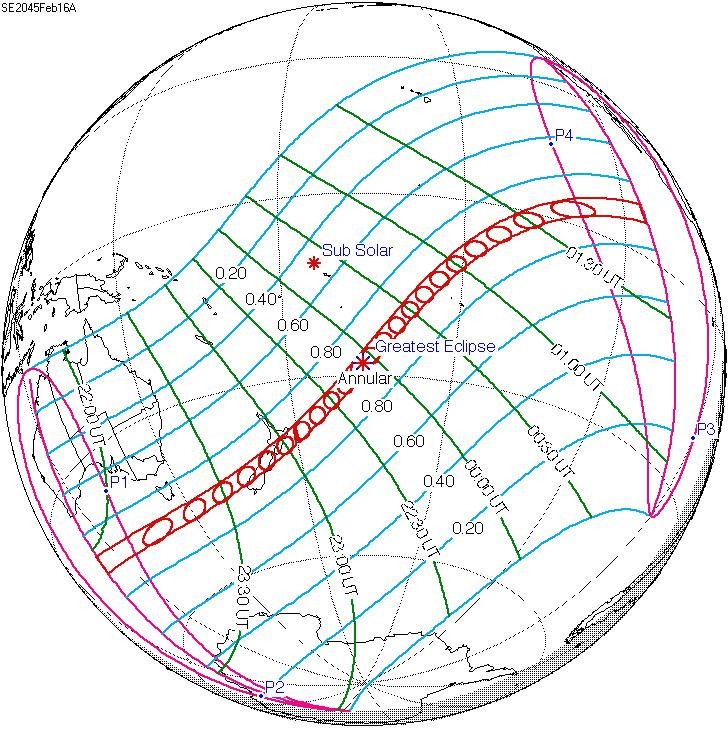Nature Annular Magnitude 0.9285 Max. width of band 281 km (175 mi) Start date February 16, 2045 | Gamma -0.3125 Duration 467 sec (7 m 47 s) Greatest eclipse 23:56:07 | |
 | ||
An annular solar eclipse will occur on February 16, 2045. A solar eclipse occurs when the Moon passes between Earth and the Sun, thereby totally or partly obscuring the image of the Sun for a viewer on Earth. An annular solar eclipse occurs when the Moon's apparent diameter is smaller than the Sun's, blocking most of the Sun's light and causing the Sun to look like an annulus (ring). An annular eclipse appears as a partial eclipse over a region of the Earth thousands of kilometres wide.
Contents
Images
Animated path
Solar eclipses of 2044-2047
Each member in a semester series of solar eclipses repeats approximately every 177 days and 4 hours (a semester) at alternating nodes of the Moon's orbit.
Saros 131
It is a part of Saros cycle 131, repeating every 18 years, 11 days, containing 70 events. The series started with partial solar eclipse on August 1, 1125. It contains total eclipses from March 27, 1522 through May 30, 1612 and hybrid eclipses from June 10, 1630 through July 24, 1702, and annular eclipses from August 4, 1720 through June 18, 2243. The series ends at member 70 as a partial eclipse on September 2, 2369. The longest duration of totality was only 58 seconds on May 30, 1612.
